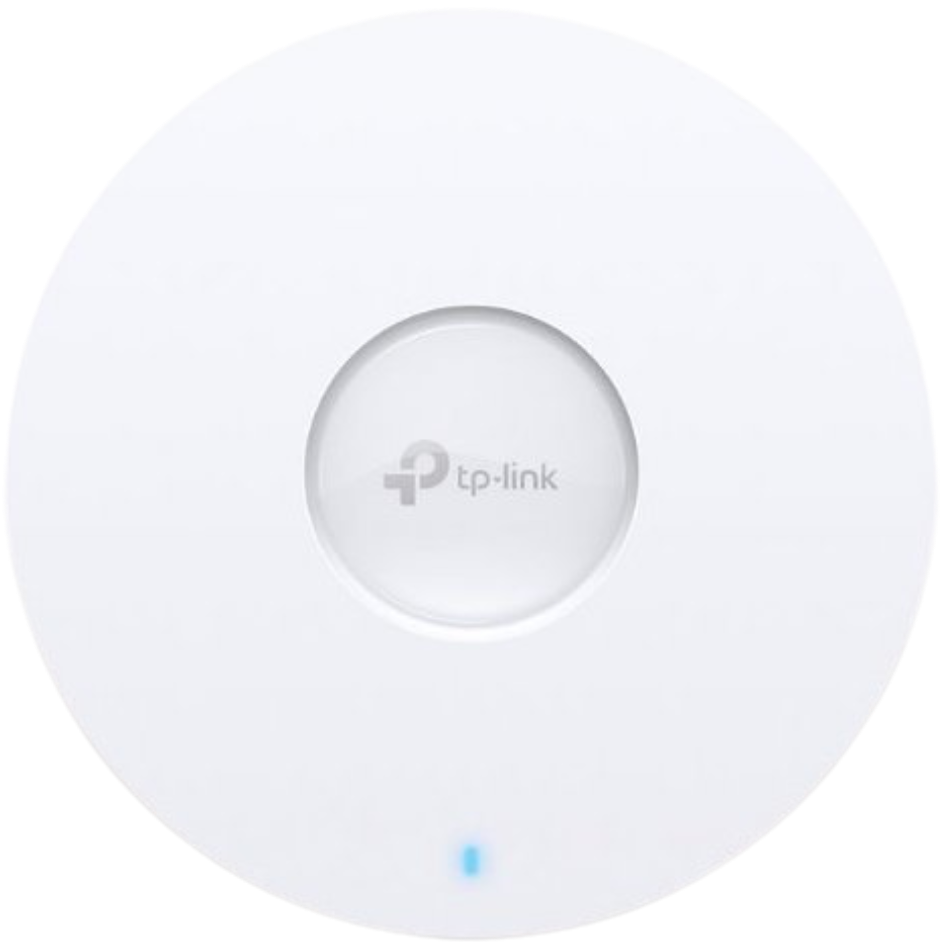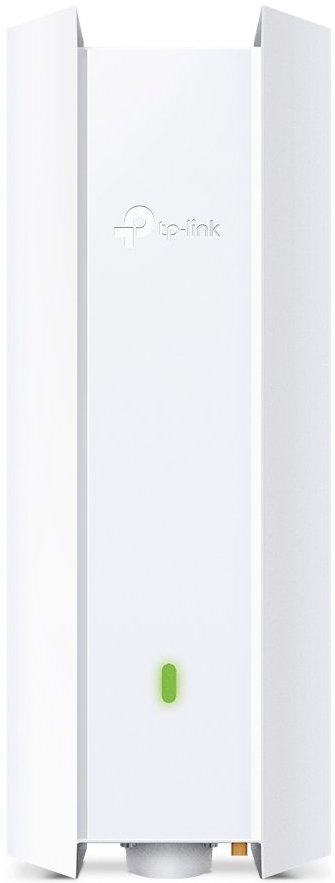For small and medium sized businesses looking to upgrade their infrastructure, it’s easy to fall into the catch-22 of network expansion; in order to safely and efficiently handle burgeoning traffic demands, data-hungry applications, multiple instances of HD video streaming and increased clients on the network, advanced networking equipment needs to be installed, monitored and maintained. As anyone upgrading a business network can tell you, as a network’s scope increases, that network’s complexity can multiply too, with the largest networks often requiring an extremely generous budget, a lengthy and intricate installation process, and round-the-clock monitoring by a network operations team. As well as the sheer manpower required to maintain such networks, costs for equipment and staff can easily spiral out of control.
However, network requirements continue to escalate for many modern businesses today regardless of cost; as a company grows from a startup into a more mature operation, the requirements involved for the establishment and upkeep of a growing network can soon outstrip that company’s budget and resources. This can be doubly true for industries like tech startups, retail outlets and restaurants who need high throughput, tight security and ample client capacity, but don’t yet have the ability to keep a dedicated IT team on-site. Many fast-growing businesses can soon find themselves restrained by a struggling network, while simultaneously not being able to spare the budget and resources required for an upgrade.
Enter TP-Link’s Omada range; pairing powerful and sophisticated hardware with a flexible and intuitive cloud-based remote management platform, an Omada installation provides high-spec devices and effortless maintenance and security. In addition to the impressive portfolio of devices, the platform’s true superpower is its revolutionary Software Defined Networking (SDN) platform, granting end-to-end centralised cloud management from a single pane of glass, allowing a single engineer the oversight and control that normally would only be available to a dedicated full-time team.
The power, flexibility and a budget-friendly price point unlocks enterprise-level connectivity for a much wider range of businesses; hospitality, education, retail, catering and medical sectors can all benefit from the greater network efficiency, robust infrastructure, tighter security and lower costs of an Omada network.
Devices
Access Points
For any business that requires a secure, high-speed and capable WiFi network (which, increasingly, is most businesses!) access points are often the first port of call. With a rich and varied collection of APs that include WiFi 5, 6 and 7 options, indoor and outdoor rated devices with low-profile and robust chassis, and even 2.5 and 10G ports for ultra high-speed wired connectivity, the Omada range includes options for any deployment, to suit any budget.
If high throughput is an important consideration, TP-Link stocks a variety of WiFi 7 access points such as the EAP773, able to deliver an aggregate throughput of over 9Gbps across three WiFi bands to over 380 simultaneous devices, as well as a 10Gbps PoE++ port to widen the range of installations. Alternatively, for dependable outdoor connectivity, the EAP610-OUTDOOR is resistant to dust, shocks, vibration and moisture with a sturdy and low-profile IP67 casing, and is fully Omada Mesh compatible for wireless connectivity between access points for extended range, flexible deployment, and eradication of awkward WiFi dead zones. From schools needing superfast and secure WiFi to support enriched, smart learning environments, to warehouses and farms needing waterproof outdoor networking for communications and IoT support, Omada access points can propagate reliable, high-speed WiFi through any deployment space.
Network Switches
To support those access points, as well as any other connected devices such as VoIP phones, IP surveillance cameras, access control systems and more, TP-Link also offers a range of managed network switches. With high switching capacity, sophisticated software features and, in many cases, a generous PoE budget, the Omada range of switches are poised to become the backbone of any network in which they’re installed.
The 8-port TL-SG2210P, for example, packs a punchy 58W of PoE power across all eight of its Gigabit RJ45 ports and also features two Gigabit SFP ports, at once delivering instant network expansion, dependable PoE delivery and high-speed fibre uplinks to businesses like smaller offices, retail outlets and restaurants. At the other end of the scale, the TL-SG3452P features 48 x 802.3at/af compliant Gigabit RJ45 ports with a total of 384W PoE and four SFP ports, providing a sleek and powerful centrepoint for demanding networks with high traffic demands.
Software
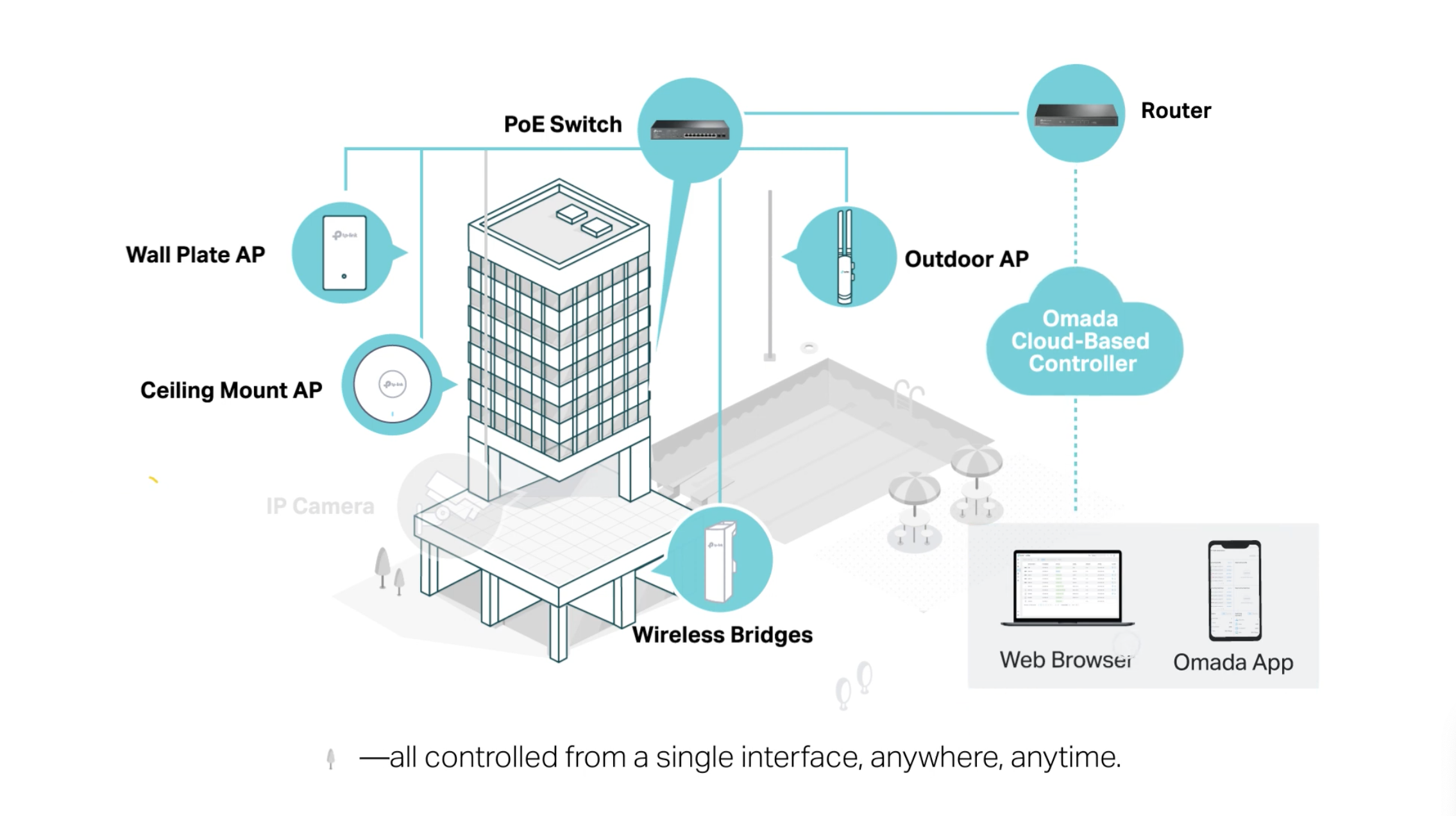
TP-Link’s portfolio of Omadas devices are a dream for small, medium and large businesses alike, then; with a blend of powerful hardware and flexible software, TP-Link’s networking devices are both robust and affordable. However, the physical devices are only a part of the true power of an Omada network; the real superpower is the software compatible with every single Omada product, TP-Link’s Software Defined Networking (SDN) platform.
Seamlessly integrating all installed Omada networking devices and offering simple, flexible management through a single pane of glass, Omada’s SDN platform is a cloud-based management platform capable of underpinning any network, no matter how complex, and granting a unique, birds-eye oversight across every device, every connected client - even every packet. By utilising Omada’s SDN in a TP-Link deployment, one network engineer can achieve the depth and breadth of supervision and control that is normally reserved exclusively for dedicated, full-time on site technicians.
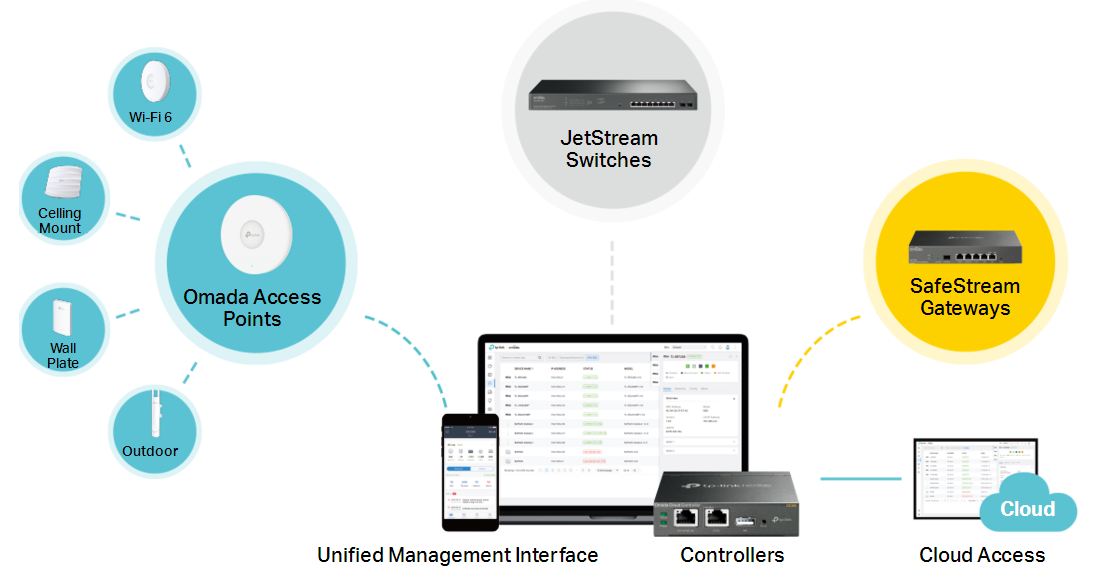
Bulletproof Security
A network is only as secure as its weakest link, and utilising exclusively high-quality and secure products such as the Omada portfolio will go a long way to security-proofing any network, with embedded features like high-throughput VPNs, powerful and flexible firewalls with customisable rules, WPA3 traffic encryption and a captive portal for guests included as standard.
However, no matter how secure a device may be, each deployment must also be supported by a flexible, robust management platform such as SDN; granting a birds-eye view over each device, and with an abundance of security functions to protect user’s data, an Omada network intelligently monitors threats and prevents any unauthorised access and breaches. 2FA capability is included as standard, further locking down any access to data from external bad actors, as well as a comprehensive access control list to stratify data access for internal users.
Crucially, while SDN is a cloud-based management platform, TP-Link ensures complete separation of network management data from user data, with no user traffic whatsoever passing through the cloud; this means that in the unlikely event of a cloud data breach, no user data will be impacted.
Seamless Efficiency
Similar to any security considerations, using powerful, high-quality networking equipment in a networked environment will of course increase the efficiency of that network; however integrating Omada’s SDN into an installation further optimises and enhances its effectiveness, by eliminating the requirement for physically present IT staff, dramatically reducing the number of engineers needed for a working oversight, and significantly reducing the cost of physical controllers like PCs and servers.
Using an OC200, an Omada hardware controller featuring hybrid Cloud technology and providing device monitoring and management, a single technician gains access to remote provisioning of devices, detailed network topology and intelligent automatic network monitoring from anywhere in the world. Features such as a WiFi heat map simplifies new installations, instantly identifying WiFi dead-zones at a glance and offering helpful solutions to spotty connectivity, while AI-driven network channel selection and power adjustment automatically adjusts channel settings and power levels of neighbouring access points to reduce WiFi interference. All metrics are instantly and intuitively delivered to the Omada interface, granting oversight across real-time network status like network usage, traffic distribution, condition logs, event warnings and key data tracking.
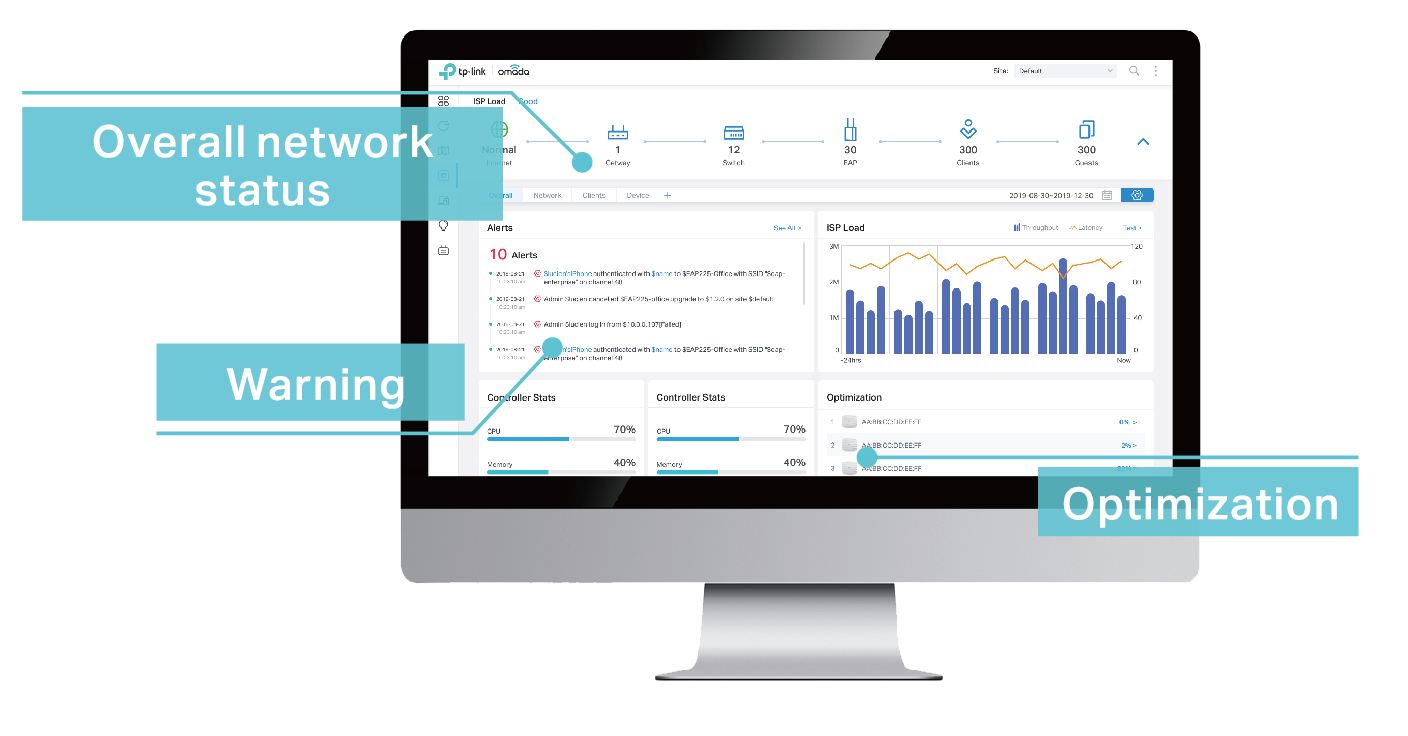
Not only can the entire Omada network be monitored remotely, but provisioned remotely too! Omada’s zero-touch provisioning service unlocks remotely deploying and configuration of multi-site networks with absolutely no requirement for on-site engineers - granting unparalleled agility and speed for customers, and a real-terms reduction in deployment cost.
Robust, Dependable and Reliable
Designed and implemented by TP-Link, a company with a remarkable tenure of almost thirty years in the industry, Omada products have a guaranteed 99% SLA uptime for cloud services to maintain maximum uptime for essential networking deployments.
Contributing to this SLA are a suite of peace-of-mind features like 24/7 fault monitoring and detection, as well as a geographically isolated backup server to ensure continued network operations even if management traffic is interrupted.
Conclusion
TP-Link’s Omada range is built on a foundation of two pillars; high product quality and sophisticated software features. A game-changing blend of enterprise-grade hardware and the ease and flexibility of Software Defined Networking, Omada condenses down the breadth and power of a fully-fledged on-site IT team into a single interface, with robust security, an incredibly rich portfolio of software features, and effortless scalability to grow in moments as the business grows. No longer are such features reserved exclusively for established industry titans; Omada’s comprehensive solution positions it as a game-changing solution for any business looking for high-specification networking without compromise.


